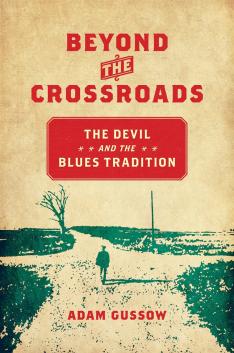
UNC Press has curated a Spotify playlist of songs referencing the devil from the appendix of Beyond the Crossroads, which can be found here. The playlist includes songs ranging from the 1920s to present, sermons, jazz selections, and gospel songs that talk about the devil as well.
The author: Adam Gussow ’79 *00 is an associate professor of Southern studies and English at the University of Mississippi. He is also the author of Mister Satan’s Apprentice: A Blues Memoir and a renowned blues harmonica player.
Opening lines: “Any researcher seeking to understand the role played by the devil in the history and mythology of the blues stumbles repeatedly upon two primal scenes. Both are set in the harsh pastoral of a premodern Mississippi Delta, and both involve young black men determined to realize their destinies as creative artists. The first primal scene has become, arguably, the most visible manifestation of Southern Gothic: Robert Johnson at the crossroads, selling his soul to the devil—often figured as a larger, older black man—in exchange for supernatural skill on the guitar. The second primal scene, the obverse of the first, also involves a negotiation with larger, older figures who enact retribution on the bluesman-in-training. The figures in the second case are parents, grandparents, “old folks,” who threaten and sometimes whip the disobedient son for daring to manifest and interest in “the devil’s music.”
Reviews: “Gussow’s analysis is prescient, and it adds significantly to our understanding of the texture and complexity of the bluesmen's art, its legacy and its meaning.” —Living Blues

